Note: This article contains major spoilers for Genesis Noir and specifically discusses the Astronomy Update version of the game.
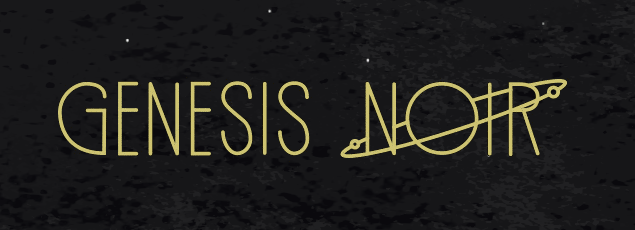
"Perhaps there is nothing new, in the end of all our beginnings, and the bison will be there, waiting for us".
-William Gibson, Dead Man Sings
The topics of cosmology, physics, and chemistry cut to the core of who we are, at least in a material sense. They charismatically detail the origin of everything we've ever seen or will see and may even hold the clues to our ultimate fates. Yet, as fundamental as these topics are to us and the reality we inhabit, they are often regarded as passionless and technical, disconnected from the human experience. Genesis Noir is a point-and-click adventure showing where the physics of the universe and the anthropological intermingle.
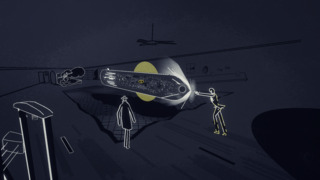
We study Genesis Noir from under the wide-brimmed hat of No Man. No Man is the forlorn occupant of a clock tower which holds its head high above an insomniac urban sprawl. In his professional life, he hawks watches, but his leisure time is a haze of bubbling alcohol and jazz lounges. This salesman is infatuated with the voluptuous singer Miss Mass, but when he drops by her apartment one night for a sexual liaison, he finds her bandmate, Golden Boy, there. Golden Boy fires a handgun at Miss Mass, and the big bang explodes out of its barrel. Time slows, and No Man sees all of history laid out in front of him, from the pistol on the right side of the room to his lover on the left. He delves into the timeline, watching the universe from its initial cooling after the big bang right past humanity's departure from Earth.
Each chapter of Genesis Noir kicks off with a brief introduction to a concept from physics and continues into an interactive sequence that lets you see, hear, and feel that concept. It couches those sequences within No Man's larger story of heartache and heroism. For example, the first level, Seeding, begins with a crash course on the universe's drastic drop in temperature 10-37 seconds after its birth. This cooling occurred unevenly, baking hotter regions of the universe that would fizz with stars and galaxies and cold spots that would remain mostly void.
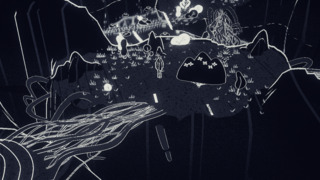
The game symbolises the priming of the universe through No Man planting seeds and configuring the resonances of various fields as if tuning a radio. Among other activities, he also prunes a tree, amputating some potential futures so that others might grow. However, this gardening doesn't just stand in for the balancing of the universe's energy levels. It's also a dramatisation of No Man hatching a plan to save Miss Mass. He witnesses Golden Boy spin a loose spring from his watch into a black hole and devises his own use for the black holes.
The second chapter, Starstruck, is frontloaded with a description of light elements condensing into the first stars and gas giants. It claims that the cores of gas giants are "failed stars", which is not quite correct but sets the table for a metaphor. In the stage proper, No Man follows a breadcrumb trail of matter into a gargantuan gas planet where he finds Golden Boy. He also flashes back in time to see Miss Mass perform in front of an audience. So, the narrative strongly hints that Golden Boy is a failed star, and Miss Mass is a successfully formed star. After all, she does have a lot of mass, and you need that for stellar formation. That Miss Mass professionally leapfrogged Golden Boy might be the cause of his jealousy of her, giving us a motive for his crime. The saxophonist may also have sought to kill her because he held a grudge after No Man was able to win Miss Mass's heart when he couldn't.

Most media speaking on science is either educational or rock-hard science-fiction. Genesis Noir is an outlier in that it pores through cosmological textbooks but relays their contents to us in a jumbled milieu of clattering chords and characters that fall and morph from one frame into the next. Besides the chapter titles and the opening text crawls, there are no words in most of the levels, making this a sensory collage. It's less like a lecture on astrophysics and more like an improvisational jazz piece about it. It outright states its subtext, and when a piece of media does that, it can drain the subtlety out of itself, leaving it a dry and lifeless exercise. However, Genesis Noir ends up with a uniquely hypnotising mystique through its enigmatic plot and subtlety in how its analogies present in its fiction.
The overall framing device in its fiction is a bit wonky; it's unclear how the creation of the universe threatens mass. Sometimes the game also passes off unproven speculations as truths or at least doesn't call attention to the fact that they're not part of the accepted science. This is true, for example, when the opening says that there are higher dimensions we can't perceive, or when, in its third act, it introduces bubble theory which posits multiple other universes beyond our own. There is no empirical evidence supporting eitherclaim.
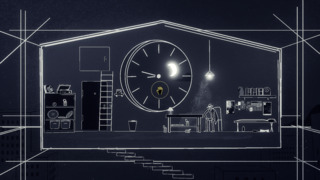
However, Genesis Noir is more scientifically rigorous than most pop culture works, and its choice of protagonist resounds with its subject matter. The watch salesman, the man who lives behind a clock, is himself a time traveller. He is "No Man" in that he does not represent a single person from history: he exists outside of the history of our species, and his name is also quite close to "Nomad"; he is a wanderer in the spacetime continuum. Note that his local hangout is "The Hopper", a reference to painter Edward Hopper, but also to No Man's propensity to "hop" through time. See also the rabbits he will later find in a research facility. A time traveller is a necessary escort for a story which aims to capture a history billions of years longer than any human life.
The transitory nature of No Man informs his character. Our galactic gumshoe is repeatedly jolted back to moments of romance and pain in his relationship with Miss Mass. In this time-hopping, he is not purposefully seeking out his destination. He is dragged into the darkest recesses of his mind against his will, dangling in mid-air or swaying through a drunken stupor. Memory is a form of time travel, and grief keeps people returning to the same times and places. Often, No Man will see his past self replicated many times over in front of him as he not only enters Miss Mass's home or drinks at her lounge but observes himself doing so. And he will observe himself observing himself, and observe himself observing himself observing himself, and so on.
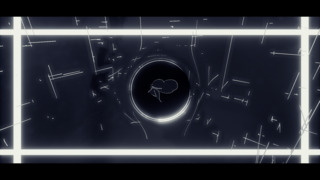
Mass has a gravitational pull, and No Man is adrift via the attractive force Miss Mass exerts on him. This is particularly well-demonstrated in the chapter Orbiting, as multiple No Mans fall into a black hole (an area of concentrated mass) with the femme fatale at the centre. As more No Mans drop below its event horizon, it grows in size, adding his mass to its mass, amplifying its pull. As No Man commits himself to his relationship with and the memory of his lover, she takes up a larger portion of his being. This increases her influence on him, causing him to commit further, and creating a feedback loop, as any black hole, regularly fed, will. The chapter, Collision, explores the probable hypothesis that a planet called Theia impacted the Earth's surface 4.5 billion years ago, slanting our world onto its 23-degree axial tilt and ejecting the rock that would consolidate into the Moon. It compares Miss Mass's effect on No Man to this planetary car crash.
While Miss Mass is inescapable, Golden Boy is elusive. Our foil represents the mathematics that catapulted the universe into existence and continue to determine its structures. We can infer this from Golden Boy bringing matter into being, us seeing his face in the stars, and him playing in the "Divine Jazz Section" alongside Miss Mass. His mathematical role is also present in his connection to the golden ratio. To refresh your memory, the golden ratio is a ratio of approximately 1 to 1.618033. In other words, it appears when one number is 1.618 times larger or smaller than another. It is often referenced as part of a series in which each number is 1.618 times larger or smaller than the previous. These sequences can be purely abstract but may also encode anything from the sizes of shapes to the frequencies of sounds.
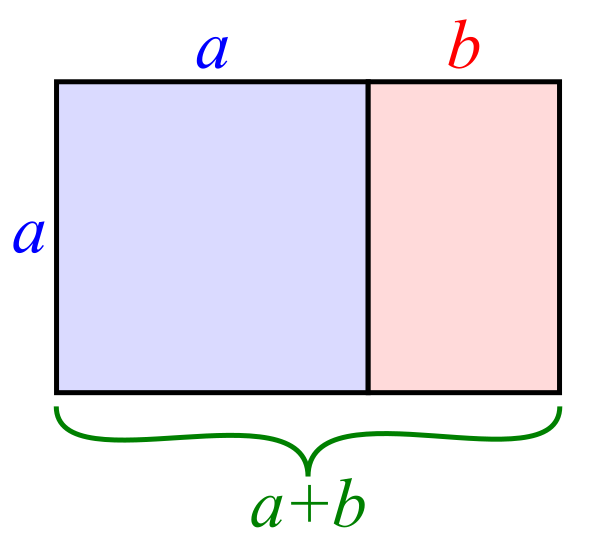
The rectangles above, for example, follow the golden ratio in that the "a" section is bigger than the "b" section by a factor of 1.618. The golden ratio is sometimes called "the divine proportion" (like Golden Boy's Divine Jazz Section) and exists in various natural and human-made phenomena. In actuality, a lot of purported "golden ratio" objects don't have quite the required proportions. Still, there are plenty of real approximations of the pattern, for example, in Salvador Dali's Sacrament of the Last Supper or in the "golden" spirals of pine cones. In the real world, as in jazz, the notes are sometimes a few notches off the mark.
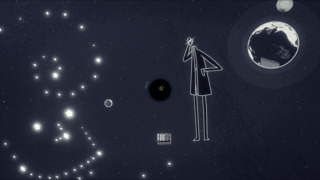
In Genesis Noir, Golden Boy takes the name of the mathematical refrain, and the golden spiral is present in his coif. While most objects in the game appear in black and white, those important to its cosmology or play are often coloured gold, including the watch springs No Man is collecting, which also follow the golden spiral. We can see the golden spiral in the antlers of a stag and the face paint of a hunter. A sunflower we light up in Seeding also references it.
As we see in the chapter Surveil, Golden Boy is a musician composing the universe. There's a logic to it: maths underpins the universe in its constants, in the formulas for resolving physical interactions, and in the numbers representing physical quantities of objects like temperature and volume. Maths is also the bedrock of music: its time signatures, its tempo, the frequency of each note, etc. Like Golden Boy, maths is everywhere, and yet you can't grab ahold of it. It is intangible, even if it exists in everything tangible.

In Golden Boy's arithmetic symphony, the golden ratio is his harmonic motif: the signature he leaves on everything from plants to animals. It is not necessarily the game saying everything revolves around this particular quantity. Remember, it tends to be highly interpretive. However, it is Genesis Noir describing the recursion of mathematical patterns throughout our universe.
So far, we have discussed material and symbolic dynamics between maths, astrophysics, and Genesis Noir's fantastical characters. However, Genesis Noir begins its crawl towards detailing the literal and societal impact of the cosmos with the levels Reflection and Hunt, in which the elements forged in stars coalesce in Earth's oceans to form life. That life evolves into the stag and the Hunter that tracks it. As we can see from her cave paintings, the Hunter considers the stag culturally dear to her, even as she slays it and its chemicals return to the Earth. In the game's final level, Exodus, the Hunter narrates herself lying under the night sky. In the stars, she sees her ancestors and the stag and bison she slew.

Hunt and Exodus remind us that space was part of the ambient nature early humans experienced. Space is everything above the nighttime horizon. It was a feature of the scenery for many ancient people as much as mountains or rivers. In some cases, more so. Countless societies drew symbols out of the stars they saw, and the Hunter's identification of her ancestors in the sky echoes the interpretations of plenty of ancient civilisations. Plato wrote that a good soul goes back to its "companion star" when its body dies. The Skidi Pawnee thought that they descended from the stars.
The chapter Gather sees No Man galavant through early civilisation and includes snapshots of the pyramids at Giza and the eruption of Vesuvius. While the stage doesn't make any particular allusions to archaic religion, the Egyptians believed that their Pharaohs could join with stars in the northern sky after death, and the Romans inherited the Ancient Greek astronomy. The Greeks thought their Gods created the constellations as lessons to humanity.
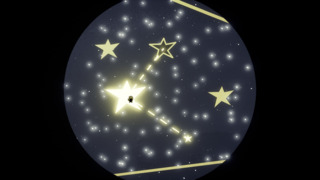
The level Reveal peers over the shoulder of an ancient priest as he tethers together points in the sky into new shapes. He exercises humanity's penchant for pareidolia: the propensity to see patterns in random data. What's particularly insightful about this section is that after each phase of astrologising, we zoom out and see the civilisation around the Priest is a little more fleshed out. His fellow worshippers construct a henge and huddle together in groups as the stars are connected. It's as though knitting these blisters of light into heroes and beasts is also threading together people. The interface for weaving together the stars is much like Reflection's UI for uniting atoms as organic molecules. The metaphor is that creating constellations is constructive to life.
In the chapter Voyage, we see a darker side of astrophysics's intrusion into our day-to-day. A particle collider on Mars creates a black hole in Earth's periphery, forcing humans to evacuate. To be clear, the developers are imagining things particle accelerators could do in the future. There's no reason to believe that one of these machines could currently suck the planet into oblivion. Still, humanity may face existential threats from outside our atmosphere. We could one day be subject to a catastrophic meteor impact, and climate collapse stands to leave us exceptionally vulnerable toheat from the Sun.
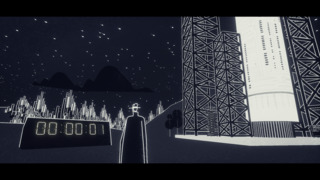
Moreover, with spacecraft as our vehicles, astrophysics would become our concern the same way that everyday physics concerns us when driving a car. And as a road becomes your surroundings when in an automobile, the humans that leave Earth find space their new backdrop. However, I think the level that best marries the cosmological to a human experience is Thaw. Thaw plays out in a feudal Japanese winter. It starts with the observation that the seasons are a product of our planet's axial tilt. When one side of the Earth leans towards the Sun, and the other away from it, one face spends a lot more time in the heat than its opposite. So, whether it's hot or cold outside, sunny or snowing, whether life is hibernating for the winter or up and active, and even what we've depicted in art is down to something as astronomical as the angular positioning of Earth.
During the course of Thaw, No Man fetches an ancient Ronin the accoutrements necessary for a tea ceremony. The steamy drink provides a welcome respite from the chill outside. When an inferior accidentally shatters the Ronin's cup of tea, he draws his blade on him. Probably because in the barren winter, a hot beverage is a precious comfort. So, the collision of the Earth with another planet 4.5 billion years ago can play a role in one man trying to kill another in the relative now. When No Man mends the warrior's vessel, he does so with the gold forged in a star. Cosmology can't get much more personal than that.

While such ideas about the dilution of space into human culture are engrossing, and as smooth-flowing and vibrant Genesis Noir's audiovisuals can be, its interactive delivery of these ideas can be faulty. Sometimes No Man resists your input like a fish trying to free itself from your hook. On paper, you have the most open environment possible: the vacuum of space. Yet, the game places down all these guard rails for you to bump up against, creating an inappropriate narrowness of movement. Other systems fail too.
Reveal is ostensibly about creating constellations in accordance with the values of your culture. But the mechanics don't let you project shapes onto the stars. Instead, you have to divine an objectively correct gallery of forms, finding the constellations rather than free-hand drawing them. The play does not support the personal and subjective notions present in the activity. This is an egregious error because Reveal is a chapter essential to Genesis Noir's central argument: that humans paper over mysteries with their experience and imagination, and that the legends they create to describe the unknown become indelible epigrams on the slate of history. The game formulates this concept with a few different phrasings, but here's an excerpt from the prologue that encapsulates it:
"Imagination embodies the dark unknown in myth. [...] A world emerges wrapped in unfamiliar forms. Your mind transforms the wisps of preternatural smoke into bodies and steel and concrete. Your experience reshapes this world and makes this form eternal".
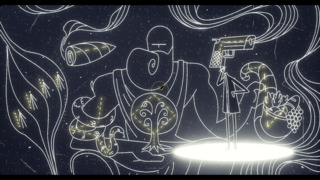
An understanding of astrophysics is unobtainable for the Hunter. Still, she does have a conception of her family history and the game she hunts, so she imposes a legend of ancestors, stag, and bison on the heavens. The Priest doesn't know what a star looks like up close but is familiar with lyres and wedding rings, and so sews them from stars, his fellow storytellers dreaming up lore for each constellation. The Ronin doesn't carry in his head a theory of thermodynamics but can see the outlines of people in the fronds of steam from his tea.
In the chapter Improvisations, No Man collaborates with a cellist on a jazz piece. The Musician can't understand his creative partner's true form as a force on the universe but recognises that universal force as artistic inspiration. In Collision, No Man aids an experimental physicist operating a particle accelerator. With his help, she makes a scientific breakthrough. His assistance seals the legend of a time traveller. A future civilisation erects a gold statue in his image, protectively watching down over their space station. Others have their own idea of who No Man is: the Ancestral Spirit or the Eternal Demon. Even the use of the terms "Genesis" and "Exodus" in this story hint at Christianity or religion being attempts to cohere a mysterious universe into something comprehensible. Imagination embodies the dark unknown in myth.
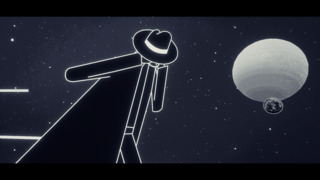
There are four myth-makers the game returns to over its runtime: the Hunter, the Ronin, the Musician, and the Scientist. Holy Trinity-style, they also constitute a single character. In the chapter Singularity, No Man finally enacts his gambit to stop the murder of Miss Mass. Golden Boy faded into the wallpaper a while ago, but by using his watch springs to create a garden of black holes, No Man hopes to pull in the entire universe. He is abusing the mathematics of the cosmos to end it in a "big crunch" before it can impact his love. What No Man doesn't realise is that astrophysicists discarded the big crunch as a plausible end for the universe long ago; his gravity trap isn't going to work.
As he prepares to suck Earth into a black hole, an androgynous white being emerges from a gateway to a futuristic city and tells him to stop what he's doing. This person then splits into four figures: the Hunter, the Ronin, the Musician, and the Scientist. Behind them, the colour spectrum stretches out, with each person shaded in a single hue. Just as white light is a combination of every wavelength of light, this alien: The Constant, is an individual, but is also a combination of these four characters.
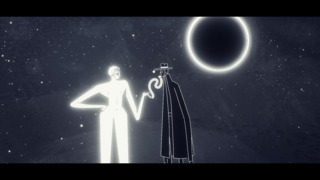
The Constant traps No Man in a black hole, an inescapable prison where he is forced to meditate on his actions. The black hole evaporates, as they all eventually do without a steady supply of new mass, but it takes the protagonist's arm with it. When No Man meets The Constant again, his anger at them quickly sublimates into love. He explains his predicament to the alien, complete with his discovery that he can't save Miss Mass. However, through The Constant, he again, experiences the lives of the people he's met and dances in perfect synchronicity with each of them. The dance number includes the following lyrics:
"Hold me and choose,
Choose to be free,
Free from all else,
Embraced by We".
At the start of the chapter Exodus, each character gets a turn to speak, and the end of one character's monologue becomes the start of the next's. The final line of that passage about the "dark unknown in myth" is "You give it a name. You call it The Constant". The Constant is the chain of myths about the universe which carry from generation to generation across our species. Their name is a statement that they are as persistent and indestructible a part of the universe as its mathematical constants, such as the speed of light or the golden ratio. This character flushes space with passionate tones in an otherwise trichromic reality and is the first person we hear speak out loud.
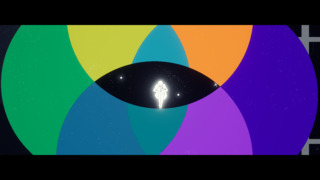
The expressive magic of this composite character is a metaphor for love: they are a rainbow in a black and white world, and you don't feel like you've heard anyone's voice until you've heard theirs. No Man's love of The Constant is of a deeper sort than his lust for Miss Mass. He is not magnetised to them by a base physical infatuation but by a conscious human interest. The Constant's high-resolution existence and their teleportation onto the scene are also symbolic of their transcendental nature. The Constant is more than any one place and time in the universe, and through their inclusion of people from across the aeons, they emit a vibrancy you won't find during any one era. No Man's attachment to The Constant, his appreciation for the collective meaning found in the cosmos, prevents him from destroying Earth. While that initially results in him resenting the continuum of stories told about the universe, and the people who told them, he quickly finds himself falling for those tales and those people.
There's another read on No Man's name we've not discussed yet. In John Donne's 1624 book, Devotions upon Emergent Occasions, he writes that "no man is an island". It's one of the most famous lines in poetry. With it, Donne was saying that no person is walled off from the rest of the world. We are all threads in a social fabric. No Man begins his arc isolated, and like the protagonist in Devotions, he hears the bell toll for him. Like Devotions upon Emergent Occasions, Genesis Noir is about confronting death and embracing something larger than yourself. For Donne, that was God, and for No Man, that is The Constant.
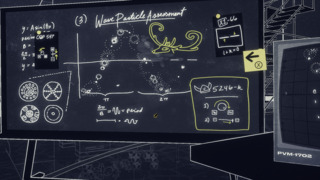
As romantic as No Man and The Constant's union is, we need a quick reality check. See, the game talks a lot about myth, but the further it travels down the timeline, the less that the characters seem to be mythmaking or even remembering the stories of old. The cellist makes abstract compositions as opposed to cosmic fiction, and the physicist, in particular, stands as the antithesis of fictionalising the universe. Sometimes, scientists have ended up imagining when they meant to describe and have consciously created myths to help us intuit facts about reality. Think about Einstein stating God doesn't play dice or George Gamow describing the nature of the atom as a "liquid drop".
However, mythologising was only the prevailing method for interpreting the universe up to a certain point in history. We then switched to a philosophy which was able to decode many unknowns. Even when it couldn't explain certain observations, it said that it didn't know the answer or that it only knew the answer down to a certain level of accuracy rather than making up a story. This mode of thinking, the scientific method, at least partially negated the need for tall tales. So maybe mythmaking and its products aren't as constant as the game makes them sound. Instead of an eternal loyalty to legend, we are left with a divide between at least some of the current crop of humans and those in the pre-scientific world.

Genesis Noir's opening argues that we need myths because there are unanswerable questions about the universe. For example, "what caused the big bang?" or "what are the natures of higher dimensions?". But how would you prove that we can't answer these questions? History is full of predictions about the stifling limits of science that now look ridiculous.
Philosopher of science Auguste Comte thought we would never be able to tell the composition of stars. Einstein thought we would never split the atom. Astronomer Simon Newcomb believed his field was reaching the end of its development in the late 19th century. All of these men were wrong. And that doesn't guarantee that all the blanks in science will eventually be filled in, but it should give us some pause before we start puffing out our chest and talking confidently about "the unknowable". Genesis Noir is a myth about how the Big Bang started, but that myth might one day be unnecessary to board up a hole in our understanding.
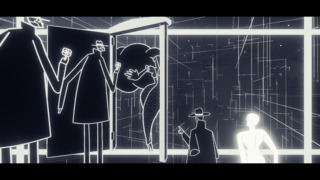
No Man faces his own intimidating decisions about what to leave behind and what to carry into the future. Not long before our terminus, in the chapter Exodus, a tract describes the "Penrose process". The Penrose process is a hypothetical technique for accelerating spaceships. The craft drops a section of itself into a black hole, and the remaining portion of the vehicle receives a speed boost in return. Moving on from a person is not just breaking from them; it's also leaving a chunk of yourself behind. No Man's journey has already taken a toll on him; he has one less arm than when he started. But by sacrificing a portion of himself, he may finally be able to rocket out of Miss Mass's orbit and regain his life.
Exodus is a chapter about potentially exiting the universe for another one, and Exodus is the second book of the Bible; it would have us leaving Genesis (Noir). But as No Man's universe revolves around Miss Mass, this stage also contains an analogy for him moving on from his attachment and grief. The Constant enables him to travel back in time and either court Miss Mass again or turn his back on her. As it's likely that Golden Boy killed Mass partly because of his jealousy of No Man, shunning Mass could save her life. But it's a catch-22: not only will the protagonist recoiling from Miss Mass erase their whirlwind romance; it also means that No Man will never meet The Constant.

In a story about leaving a dead partner, there is no conclusively happy ending, but the one in which No Man joins hands with his alien lover feels considerably less lonely. It's the difference between intimacy with four people and intimacy with none. In the scene in which No Man returns to The Constant after leaving the black hole, they levitate a patch of flowers to fill in for his lost arm for just a moment. It's the loose possibility that The Constant could replace what No Man has lost and make him whole again. As The Constant's song says, choosing them will make him free.
I've already voiced some of my doubts about Genesis Noir's argument for the endurance of myth. Still, I do think the game is correct that a lot of what has happened and is happening in the universe is difficult or impossible to picture. That being the case, visualisations of the universe's mathematical jazz are vitally important. Art like Genesis Noir can put a face to the faceless and give a voice to the golden silence.

Its writers are further correct that humans always told and still tell narratives about the universe. A narrative doesn't have to be fiction; there are true stories, and we can identify a lineage of humans spinning yarns about the cosmos that they believe to be fact. Even if few us now think our soul will return to its companion star or that we can glimpse warriors in the sky, we can still remember the sacred myths of history. We are connected to ancient people by the very human acts of storytelling and trying to decipher the reality before us, and in that connection, there is something worth loving. Thanks for reading.
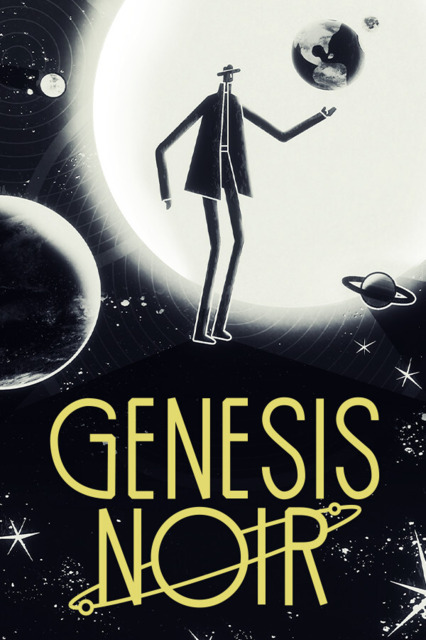
Log in to comment